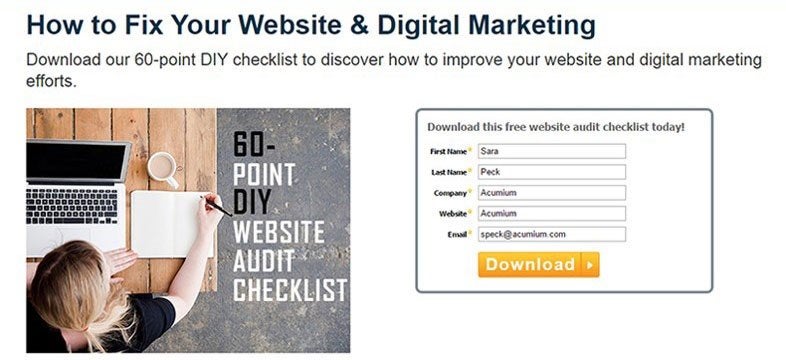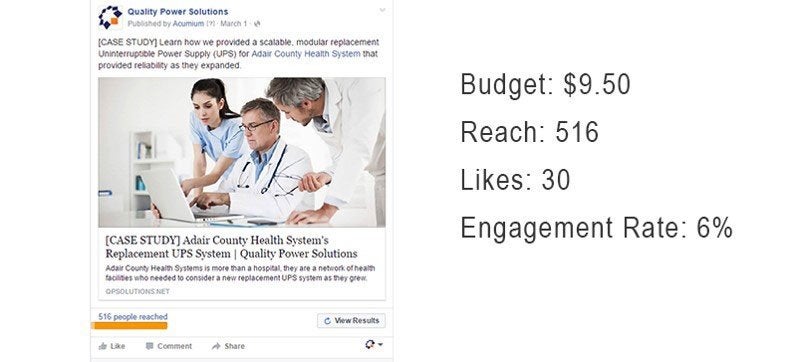
In our previous post, How Content Fuels Social: Content Ideation, we discussed effective methods for content ideation, the first step in the content creation process. Now that we know our buyer personas, each stage of the buying cycle and the gaps or holes existing in our current content, we need to create new content that resonates with each persona and keeps them engaged along each stage of the customer journey.
Creating content isn’t difficult, it’s just time consuming. One strategy to streamline content creation is to focus on creating content that is “evergreen” or, in other words content that will always be relevant in your marketplace. Quality content is key to increasing inbound traffic to your website or blog via keyword search results on Google or Bing. Quality content also establishes your brand as an authority in your industry, meaning prospects look to your brand for reliable answers. Once you’ve established evergreen content that speaks to your brand, finding ways to expand upon, refresh and repurpose that content makes life easier for you and your team. We’ve outlined several examples of how to do just that for each of our personas, in each stage of the buying cycle.
Awareness
Let’s look at one of our clients, ProClip USA, as an example of how to repurpose content in the awareness stage of the buying cycle. ProClip is an international distributor of high-quality custom mobile mounting solutions. Each car mount and phone holder is designed to fit your phone’s specific measurements, as well as your vehicle’s make and model, for the best fit and viewing angle possible. Their phone mounts serve a B2C audience, which is made up of tech and vehicle enthusiasts who desire quality, one-of-a-kind products. They also have a growing B2B business that serves a variety of business industries and needs. One industry they serve is fleet vehicles, such as taxi cabs and municipal vehicles like police cars. The also offer secure device stands for retail point-of-sale, as well as solutions for the healthcare and manufacturing industries.
In the awareness stage we focus on bringing new people into the customer funnel. In this stage we are really just trying to get found through related organic search results by producing quality SEO content related to each specific industry they serve. We are casting a wide net to see what we can catch, so to speak.
Below are two awareness blog post examples, one for B2C (left) and one for B2B (right.) Both articles are great for increasing SEO value on ProClip’s website. The posts also serve as a way to fuel their social media channels through targeted and paid distribution strategies. Targeting based on keyword interests, industry and job titles (B2B) are best suited for Facebook advertising. We can even fuel their email channels with the same content. Keep in mind that just like on social, you will still need to segment your audiences, if you have more than one, to ensure distributed content reaches the audience who will find it both relevant and useful.

The more channels you distribute to, the more reach and engagement your content will receive, thus driving up SEO relevance on your website by increasing referral traffic and sales!
Consideration
A big part of the lead generation process is content created for the consideration phase of the customer journey. This phase gives marketers the ability to acquire new email addresses from interested parties. The acquisition of emails allows us to remarket to leads via many channels, including social media and email, and takes them to the “intent” phase…another step down the path toward converting. There are many types of content that are great for use during this phase including: contests, quizzes on social media, downloadable ebooks, and white papers on your website. In order to be successful, you must create high quality content that people will be willing to give up their email address for, such as this valuable DIY Website Audit Checklist we created for our inbound marketing purposes at Acumium.

After implementing this checklist on a website landing page and promoting it via social media and email, we also repurposed this DIY checklist and included it as a bonus in another piece of content we created titled: 7 Ecommerce Website Essentials You Need to Grow Sales: A Guide to Create Sites That Convert.
While both pieces of gated content are great on their own, another way to repurpose this valuable information is to take the individual 60 points or take seven of the essentials and break them down, expanding upon them by creating individual blog articles that can be promoted on social media. This is a great way to maximize your efforts and increase referral traffic. Believe us, creating this type of content is definitely worth the effort once you see the quality leads start to come in.
Intent
Once a lead has considered your business and has provided their email address, the lead moves into the intent phase. Now that we have their email address, we can start our remarketing strategy by sending them case studies as a way to help “close the deal.” People want to see examples of how you solved a problem or helped your current customers. Here are some examples of case studies from our client Quality Power Solution’s website. QPS specializes in providing back up power supply systems to B2B customers in the IT, manufacturing, retail, financial and healthcare industries. Talk about a niche client! These case studies live on their site and offer great content for social and email distribution, as well as position them as the leading solution provider in the space.

To promote their case studies on Facebook, our targeting had to be extremely specific and based on industry, job title and location – as QPS is a regional company. We boosted the post for less than $10, and while it only reached 516 people due to its specificity, it received great engagement, including 30 likes. That’s a 6% engagement rate, which is well above the 1% that is considered “good” on Facebook. More importantly, it brought awareness of QPS’ services to its exact target audience and created click-through to their site where people could learn more about them, sign up for their newsletter and more.
Loyalty
The loyalty phase of the customer journey is unique because it serves dual purposes. Customers provide feedback on your products or services and that feedback can then be used to gain insights into what those customers value about the brand. This feedback also helps other leads during the intent phase by providing real customer feedback about a business’s product or service.
For example, we all do this when we shop online – we visit sites such as Yelp, Angie’s List or business’ Facebook pages to read what other people are saying in comments and reviews about a business. These reviews and comments are very powerful to users during this intent phase. As marketers, it’s our job to leverage great reviews to reinforce what we have been telling our leads all along. Great reviews give us credibility. As marketers, they also give us a line of site into what our customers really think of our businesses’ products and services – for free.
For an example of customer reviews, we’re going to go back to our first example we provided for our client ProClip USA. To gain more information from customers on what they like about ProClip USA and why and how they use mobile device mounts, we conducted a simple customer survey and we learned a lot! Using this information, we created a series of blog posts that we distributed via social and email.

One of the things we were able to learn is that ProClip products made customers feel more safe in their vehicle while using mobile technology such as GPS, music streaming and hands-free talking. This information spun off into another series that focused on driver safety, where we addressed specific safety concerns around mobile devices and driving. We provided information on how ProClip customers that keep their phones mounted, yet in sight for GPS and music streaming, could enjoy a less distracted and a safer driving experience.
Conclusion
For many companies, finding the time to create or repurpose content is the hardest part. Marketing professionals wear so many hats that setting time aside to either write or construct a viable content strategy can easily get away from us. However, once you have a cohesive content marketing strategy and a few pieces of content, you can start to fuel your distribution channels, like social and email, with the content your audiences will want to read. The distribution will help to expand your content’s reach, your website’s referral traffic and ultimately your sales. Check back for our next article, How Content Fuels Social: Part 3 – Promoting Content, where we’ll provide you with specific examples of how to promote your content on a variety of social media channels using several different types of advertisements.